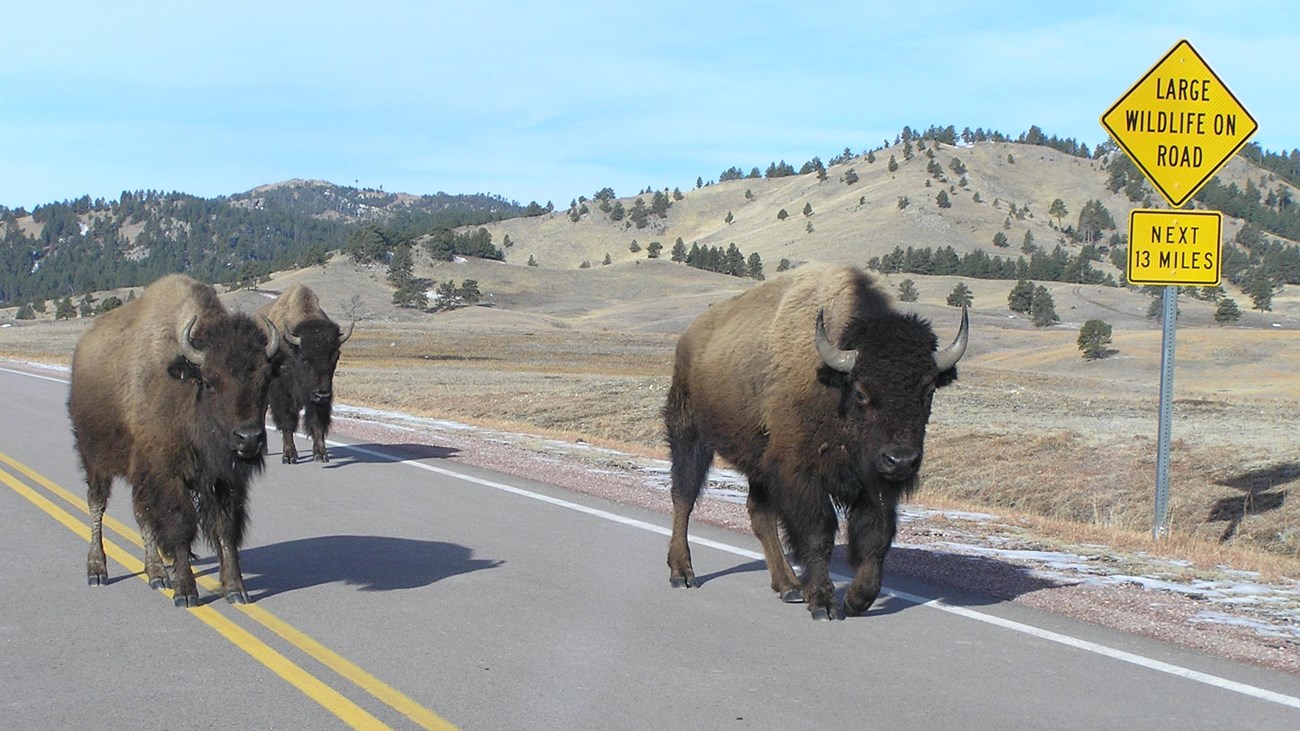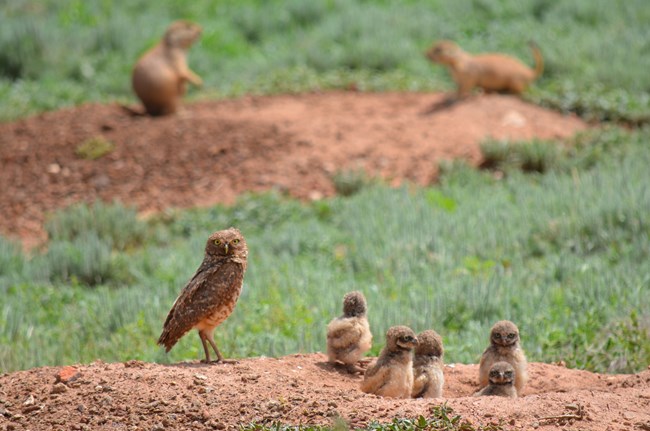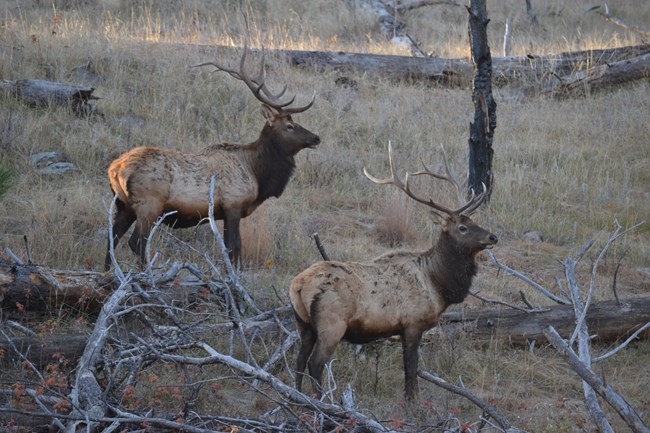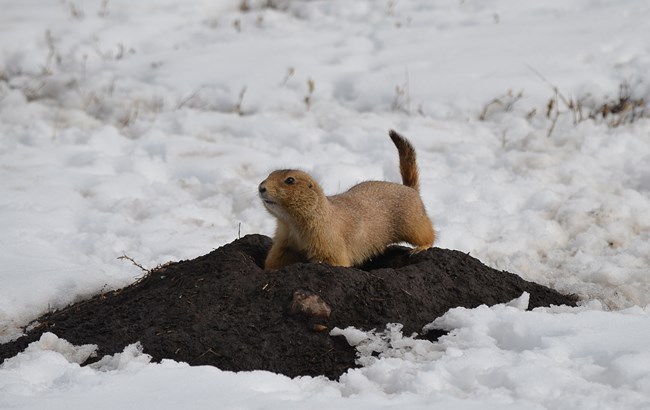Last updated: August 18, 2024
Thing to Do
Watch Wind Cave Wildlife

NPS Photo
Wind Cave National Park is one of the smallest parks at over 33,000 acres. As small as it is, there is a remarkable variety of wildlife here and being able watch animals in their natural habitat is an amazing experience. Because of the park's diverse wildlife, one of the most commonly asked questions is "where are the animals?" The answer to that can be very complicated.
Each section below tells you the best places to see specific animals in the park. Be aware that wildlife has free roam of the park and will not always be found in the same place. Animals change their behavior depending on the time of the year and weather.
NPS 5 and 6 are gravel roads with rough terrain that may difficult for people with wheelchairs. There are gravel pullouts with limited parking space at the Centennial, Highland Creek, and Boland Ridge trailheads and Lone Pine Overlook.
View Wildlife Safely
-
Do not approach any wild animal. Visitors must stay at least 25 yards (23 meters) from all wildlife, although it is strongly recommended to stay farther away from bison. Bison may appear tame but are unpredictable and dangerous and may charge without warning. They are more aggressive during the calving and mating season from May through August.
-
Wildlife may be present on park roads at any time of day or night. Please obey speed limits and plan ahead for delays due to wildlife when traveling through the park.
-
Feeding prairie dogs and other wildlife is illegal in all national parks. Feeding wildlife can make the animal sick or cause them to seek handouts from humans in dangerous areas like roads or parking lots. Animals used to human contact lose their fear of humans and may become aggressive. Wildlife may also carry diseases that can be transmitted to humans.
-
Prairie dog burrows attract many animals including rattlesnakes, black widow spiders, and fleas that may transmit plague. Be sure to enjoy prairie dogs and their towns from a safe distance.
-
Drones and other unmanned aircraft are illegal in Wind Cave National Park. Drones disturb wildlife and create hazards for other visitors. Consider bringing a camera with a lens ideal for distance photography instead.
-
Spotlighting is not permitted in the park. Although you may encounter wildlife while driving through the park at night, shining headlights or other artificial light on wildlife disturbs animals and causes them to change their behavior. Try parking at one of the park's wayside pullouts after dark and turning your car off to listen to the sounds of nature.

NPS Photo
Bison Flats
This part of the park is a good place to look for Wind Cave's hoofed mammals. As the name suggests, some of Wind Cave's bison herd is often seen roaming the wide expanse of Bison Flats. When traveling along Highway 385, you may get stuck in a "bison jam" in this part of the park as the herd crosses the road. Bull bison can be seen as they lounge by themselves or in small groups. Pronghorn also frequent this area, especially the hillsides near the visitor center. These unusual animals are found in wide open areas where they can easily spot predators like coyotes. Large herds of elk are occasionally seen in this area at dusk and dawn, but do not normally approach the road until after dark.
During wet years, a seasonal pond near the intersection of Highway 385 and the southern end of the visitor center road may be sustained for weeks or even months. When present, this pond becomes a watering hole for many animals including migrating birds and can be a hot spot for bird watching.
The East Bison Flats Trail (#3) can be picked up either at the south entrance of the park or a half mile down Wind Cave Canyon Trail. The trail allows visitors to hike into this part of the park through open prairie along a marked route. Be sure to give all wildlife including bison plenty of space.

NPS Photo / Claire Visconti
NPS 5 and 6
The northeastern portions of the park can only be accessed by gravel backcountry roads, NPS 5 and 6. This part of the park offers plentiful views of the prairie away from the more heavily traveled paved roads. This is an ideal place to look for some of the park's bison herd as they are drawn to the large prairie dog towns and open spaces. Often, herds of cows and their calves are found within sight of NPS 6 as you drive north into Custer State Park. This side of the park is also a good place to look for pronghorn, their white backsides visible from a long way off. Prairie dog towns along the western portion of NPS 5 attract many burrowing animals and predators.

NPS Photo / Timm Richardson
Boland Ridge
Located near NPS 6, Boland Ridge is home to one of the park's elk herds. These shy animals are usually only seen close to sunrise and sunset and become less active in the middle of the day. In September and October, bull elk may be heard bugling in the twilight hours to attract females and challenge other bulls. Bison may be seen enjoying the grass between the ridgeline and NPS 6.
Boland Ridge Trail can be accessed from NPS 6. This strenuous trail takes visitors up and down through some of the park's easternmost valleys and over Boland Ridge itself.

NPS Photo / Kim Acker
Prairie Dog Towns
Most of Wind Cave's prairie dog towns are located along park roads, especially Highway 385, making them easily accessible places to spot a large variety of wildlife in a short period of time.
Prairie dogs are active year round and do not hibernate. They live in large groups known as towns so they can keep an eye out for predators. Because they are so numerous, prairie dogs have many predators which makes a prairie dog town an ideal place to spot wildlife. Some of these predators include badgers, coyotes, and birds of prey.
Other animals, like burrowing owls and rattlesnakes, use prairie dog burrows as shelter. Grazing mammals such as bison and pronghorn prefer to graze among the prairie dogs because the grass is more tender and nutritious. Bison also like to wallow in the large patches of dirt at the entrances of burrows.
